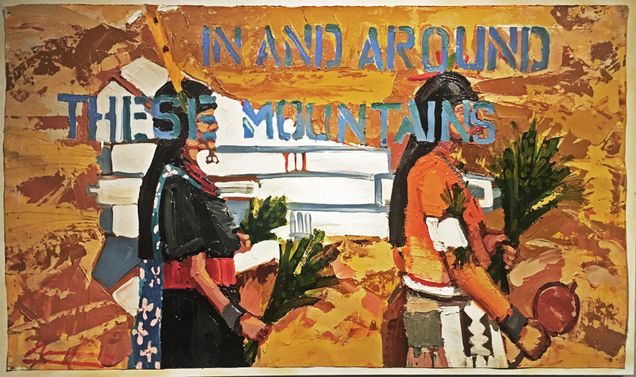Editors’ Introduction

This issue of SEQUITUR looks to boundaries, both physical and conceptual, to explore what it means to “[cross] the line.” Borders, as lines of containment or exclusion, intrinsically bring dichotomies to the forefront; their “crossing” is often viewed as an act of transgression. The contributors for this issue explore the places where boundaries exist, the dualistic opposition their existence establishes, and how the “crossing [of these] lines” can both be an act of deviancy and conjure new meanings.
In the feature essay, Evan Fiveash Smith explores the politics of transgender representation seen in Greer Lankton’s relationship to her semi-autobiographical, ever-changing dolls. The dolls and mannequins that serve as the nexus of Lankton’s work inhabit a nebulous space, between living subject and inanimate object. Between the restrictive, traditional binaries of gender, Lankton and her dolls provoke new ways of considering subjectivity.
Rebeka Sara Szigethy’s visual essay questions how we define objects. Using photograms of stones, she dissolves the boundaries that surround the concept of “objectness.” In the process of transforming a real-world object into a two-dimensional image, Szigethy questions how objects exist. Can they be read as subjects? And, can different strategies of visualization, such as the tactility of the photogram, help change our relationship to these objects?
The interview between Jonathas de Andradeand Catarina de Araújo discusses how the Brazilian artist’s work in installation, photography, and video crosses the borders of gender, class, race, and nation-state. The artist’s work asks the viewer to situate themselves within the dialogue of “us” and the “other.”
Both of the exhibition reviews highlight the reunion of artwork and objects from across geographical boundaries. Jillianne Laceste explores the Isabella Stewart Gardner Museum’s exhibition, Botticelli: Heroines + Heroes, the centerpiece of which is the reunion of the master’s sister paintings The Story of Lucretia and The Story of Virginia. Bihter Esener provides a detailed overview of the Metropoitan Museum of Art’s Armenia! exhibition, which brought together objects from collections around the world in the first major exhibition on medieval Armenian art and culture in the United States.
The two book reviews, Sara Stepp’s on The Politics of Painting: Fascism and Japanese Art During the Second World War by Asato Ikeda and Amber Harper’s on L’Origine du monde: Vie du modèle by Claude Schopp, focus on publications that question traditional scholarly arguments by reframing the contexts of artistic production and display.
Finally, Rachel Hofer, co-coordinator with Kiernan Acquisto, reflects on Boston University’s 35th annual Graduate Symposium in the History of Art & Architecture, which was held at the Museum of Fine Arts, Boston on March 2, 2019. Titled “Frontier: Exploring Boundaries in the History of Art and Architecture,” the symposium served as inspiration for this issue’s theme. Dr. Ila Sheren, Assistant Professor of Art History and Archaeology at Washington University in St. Louis, gave the keynote address, which centered around some of India’s major waterways and the intersection of religious practices and environmental pollution. Graduate student papers focused on the transgressive and restrictive nature of borders.
This issue’s contents ask our readers to question the boundaries in their own lives, to challenge established frameworks and conventional methodologies. What can it mean to establish limits and what can be enabled by “crossing the line”?
We would like to offer a special thanks to our outgoing Senior Editors Kimber Chewning, Lauren Graves, and Ali Terndrup, who have not only overseen a rebranding of the journal but also continually pushed to expand its conceptual boundaries. Their insight, guidance, and collegial spirit have been defining characteristics for SEQUITUR. We hope to continue to build upon their work and are excited to see which boundaries SEQUITUR will cross next.